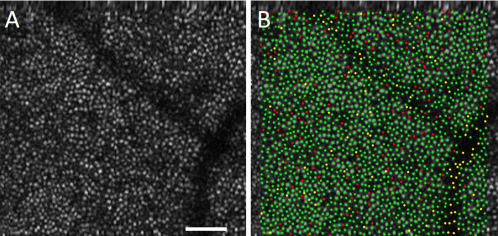Adaptive Optics for Medical Imaging
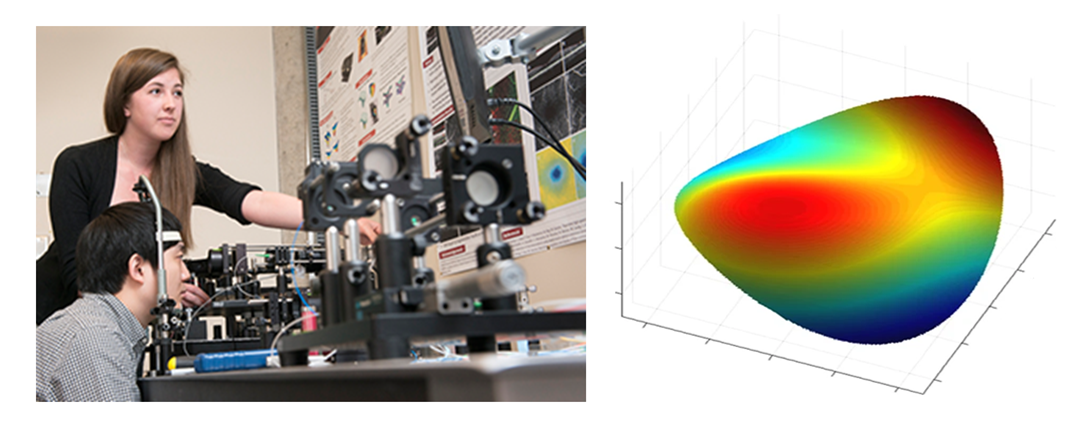
The same AO technology can be used for microscopic imaging, controlling the wavefront of light to achieve a perfect focus. AO has been adapted to biomedical optical imaging for a variety of applications, ranging from multiphoton microscopy to non-invasive imaging of human eyes for the early diagnosis of vision robbing diseases. Research on AO imaging systems provides opportunities to develop skills in optics, imaging systems, programming, control systems, and image processing.
Research motivation:
Many common vision robbing diseases affect the retina, a neurosensory extension of the brain located at the back of the eye. Challenges in retinal imaging include the physics of optical design, correction of imperfections in the natural eye surfaces, detection of weak signals, high speed electronics, and real-time signal processing to generate images. This research project is in collaboration with Moorfields Eye Hospital . The research topics available through this project include: AO technology innovation at an optics bench, development of novel AO control systems, Artificial Intelligence (AI) for AO image analysis, and complete AO system integration for clinical imaging of patients eyes at Moorfields.Examples of recent research projects in the Sarunic Lab
Image-guided AO
Conventional AO uses a wavefront sensor to make a direct measurement of the aberrations. An alternative approach to AO uses the information in the image to determine the aberrations. Image-guided AO, also known as wavefront sensor-less (WFS-less) AO or Sensorless AO (SAO), calculates a quality metric (e.g. brightness or sharpness) on the image which changing the shape of the wavefront using the deformable mirror in an iterative feed-back loop. Some of our early work on SAO can be found here . The first author of this work, Dr. Yifan Jian, is currently an Assistant Professor at Oregon Health and Science University (OHSU) Casey Eye Institute.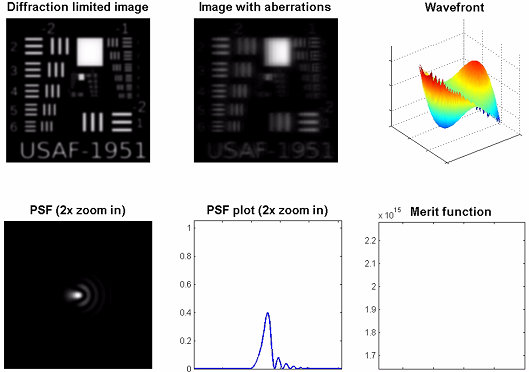
AO control
Wavefront sensor-less AO is an emerging area of research with significant potential for new developments in the image-optimization process. In a recent project published in Biomedical Optics Express that we called DeepMODAL we used Deep Reinforcement Learning (DRL) in the feedback loop between the image quality and the shape of the deformable mirror.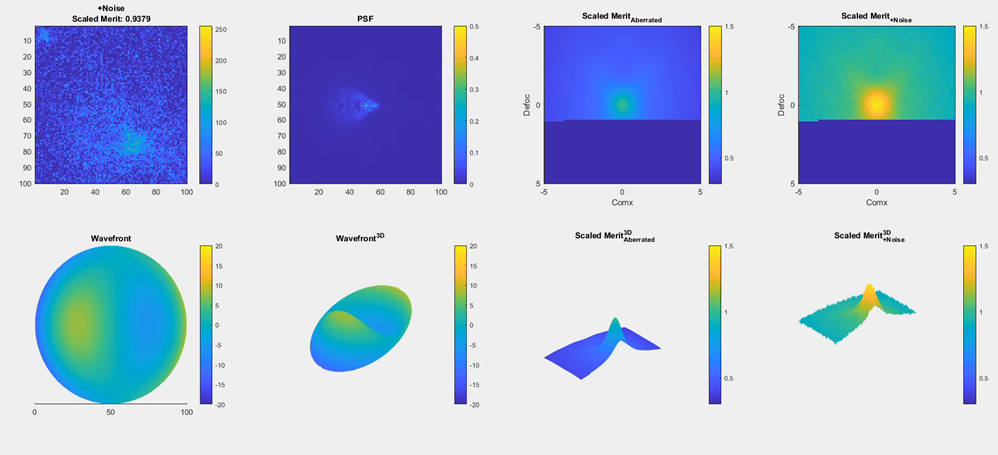
Expanding the field of view
High resolution imaging with AO provides an exquisite image of only a small area. In our recent work, we have developed approaches to multi-scale imaging systems. Our work reported here investigated optical systems with a zoom factor, similar to the use of zoom lenses on conventional cameras. The first author of this work, Dr. Myeong Jin Ju, is currently an Assistant Professor at the University of British Columbia Department.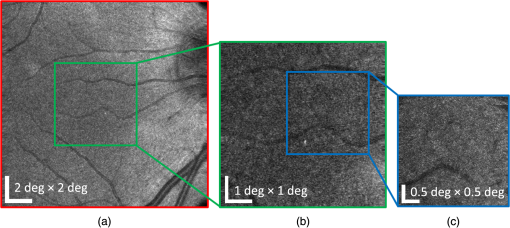
Image Sampling and Artifical Intelligence for Classification
We are also exploring the combination of AI with changes to the acquisition parameters in order to further expand the field of view. We investigated the effects on the performance of AI classification on medical images with a reduced sampling rate with encouraging results.
Artificial Intelligence for AO image-analysis and processing
High speed AO image acquisition generates enormous amounts of image data that require detailed analysis for diagnosis. An example application described here uses a Deep Neural Network (DNN) to counting the individual photoreceptor cells in the AO images. Additional work on this topic would investigate the combination of deep phenotyping with AO to complement Deep Learning for classification of diseases, and for predicting disease severity before the onset of vision loss.